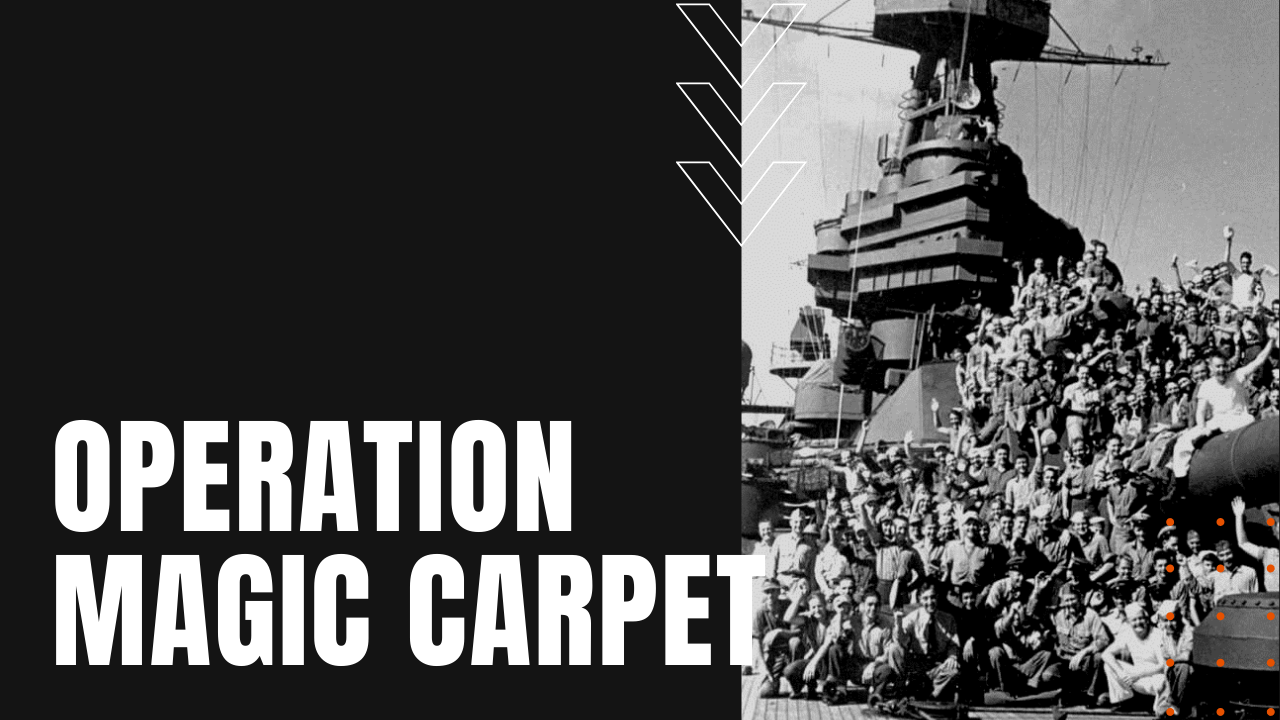Operation Magic Carpet: Repatriation of WWII Troops

By mid-1943, long before the defeat of Germany and Japan in World War Two, US Army Chief of Staff George Marshall began grappling with the logistical scope of repatriating more than 8 million servicemen and women to North America, spread out across four continents and 55 theaters of war.
At the head of the task was the War Shipping Administration or WSA, which was established by President Franklin D. Roosevelt early in 1942, whose original charter was to increase the shipping tonnage of supplies and GIs by all branches of the US military in both the European and Pacific theaters of war.
What was Operation Magic Carpet?
In tandem with the US Maritime Commission led by Admiral Emory Land, from September 6th, 1945 until September 1st, 1946, Operation Magic Carpet would prove to be the largest combined air and sealift ever organized in recorded history.
While Operation Magic Carpet began ferrying US personal back from Europe in late June of 1945, the operation kicked into high gear after U.S. Navy ships joined the boatlift following the surrender of Japan, including the deployment of 70 aircraft carriers, which became the GI’s travel mode of choice due to spacious accommodations and amenities, including movies in the hangar decks, fresh food, hot meals, sports, swimming and an abundance of ice cream.
Other GIs were ferried home in luxury aboard passenger liners like the Queen Mary, as well as an additional 29 troop ships used to deliver some 70,000 war brides and their children to their new homes in North America. As the months ticked by during Magic Carpet, the numbers of repatriated personnel reached astronomical proportions, while the overall average return rate during the course of Magic Carpet saw more than 22,000 Americans returned home each and every month.
By way of comparison, during the course of war in Europe and Japan, an average 148,000 soldiers were transported into both theaters of war on a monthly basis, while post-VE and VJ-Day repatriation saw more than 450,000 GIs returned home every month of the operation.
From VE-Day to September 1945, over 1.4 million soldiers were repatriated, while from October 1945 to April of 1946, the numbers swelled to another 3.3 million, establishing Operation Magic Carpet as the largest mass movement of humanity ever attempted or accomplished, setting the stage for the largest post-war Baby Boom in American history.
